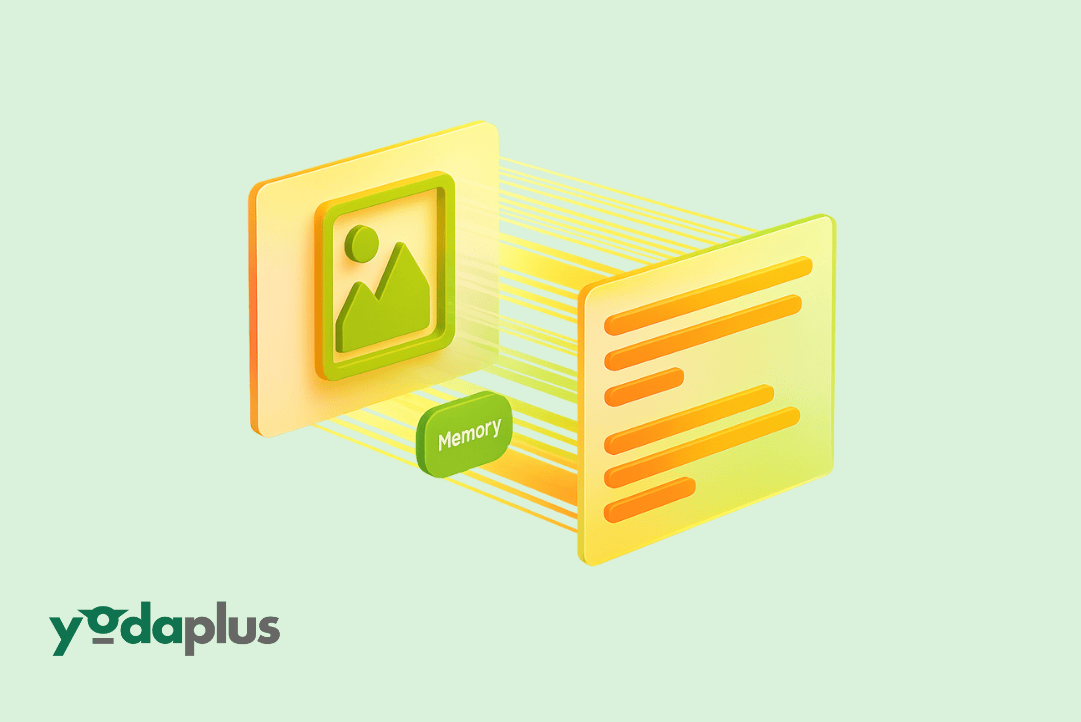
How Artificial Intelligence Agents Use Text, Image, and Table Memory
July 22, 2025 By Yodaplus
As Artificial Intelligence (AI) advances, we are now seeing a new type of system called multimodal agents. These agents can work with different types of data, such as images, text, and tables. This helps them understand tasks more clearly and respond more accurately.
Whether it’s in logistics, finance, or customer support, the ability to use multiple data formats is changing how AI agents operate. In this blog, we’ll explain how these agents are designed, how their memory works, and how technologies like Agentic AI, LLMs, and machine learning support them.
What Are Multimodal Agents?
Multimodal agents are autonomous agents that can read and understand more than just text. They can work with:
- Text like reports, emails, or instructions
- Images such as diagrams, photos, or screenshots
- Tables like spreadsheets or structured data files
Many traditional AI systems rely only on text using natural language processing (NLP). But multimodal agents bring together different types of information, which helps them handle complex tasks more effectively.
Why Memory Matters in Agentic AI
A key feature of multimodal agents is memory. These agents can remember and use information across different steps of a task. This is important when the work involves more than one piece of data.
There are three main types of memory:
- Short-term memory stores information for a single task.
- Long-term memory keeps important knowledge for future use.
- Multimodal memory handles images, tables, and text all together.
Systems like MCP (Model Context Protocol) help agents manage and share this memory. In an agentic framework, different agents may work together, using shared memory to stay in sync and complete tasks more efficiently.
Why Image, Text, and Table Memory Are Important
Imagine a Crew AI agent helping with ship maintenance. It might need to:
- Read a manual or checklist (text)
- Review equipment photos (image)
- Check a maintenance log or fuel report (table)
Without memory, the agent would keep asking for the same information. But with multimodal memory, the agent can remember recent actions, spot problems in images, and compare data across formats. This improves both speed and accuracy.
What Powers a Multimodal Agent?
Here are the core parts of a multimodal AI agent:
- Memory Storage
This stores the agent’s memory. Many systems use LLMs to handle text, images, and tables in one shared space. - Smart Retrieval
With techniques like RAG (Retrieval-Augmented Generation), agents can look up past data before replying. - Context Handling with MCP
MCP helps agents keep track of conversations and pass information between each other during a workflow. - Use of Generative AI
Generative models help produce answers, summaries, or visual feedback using machine learning.
Where Multimodal Agents Are Used
- Healthcare: Agents can check patient records, review scans, and track vitals.
- Finance: AI can pull insights from reports, tables, and charts.
- Maritime: Systems like Crew AI can read SOPs, inspect images, and use HSEQ tables.
- Legal: AI helps read case files, scanned documents, and compliance sheets.
These agents work better when they use multiple data types, not just text. That’s what makes Artificial Intelligence solutions more practical in real-world jobs.
How to Design a Multimodal Agent
If you’re building one, follow these steps:
- Choose the Data Types
Decide if the agent needs to work with text, tables, images, or all of them. - Create a Memory System
Use tools like vector databases to store information in a way that’s easy to search. - Pick the Right Framework
Use an agentic framework that supports teamwork between agents and memory sharing. MCP is a good example. - Train Your Agent
Use machine learning to train the agent on your specific tasks or industry data. - Test the Workflow
Make sure the agent retrieves the right memory, shares it properly, and gives helpful results.
Final Thoughts
Multimodal agents are changing how we use AI technology. By working with images, text, and tables, they create a fuller understanding of the task. This leads to better performance and smarter results.
If your data is stored in different formats, it may be time to explore Agentic AI. These systems can read, remember, and respond with more context. Whether it’s Crew AI in shipping, legal automation, or financial tools, agents that use multimodal memory are becoming essential.
At Yodaplus, we help businesses build intelligent, context-aware systems using AI, memory, and multimodal capabilities. Autonomous systems are not just about automation—they’re about understanding. And with the right memory support, they can do much more than just follow instructions.